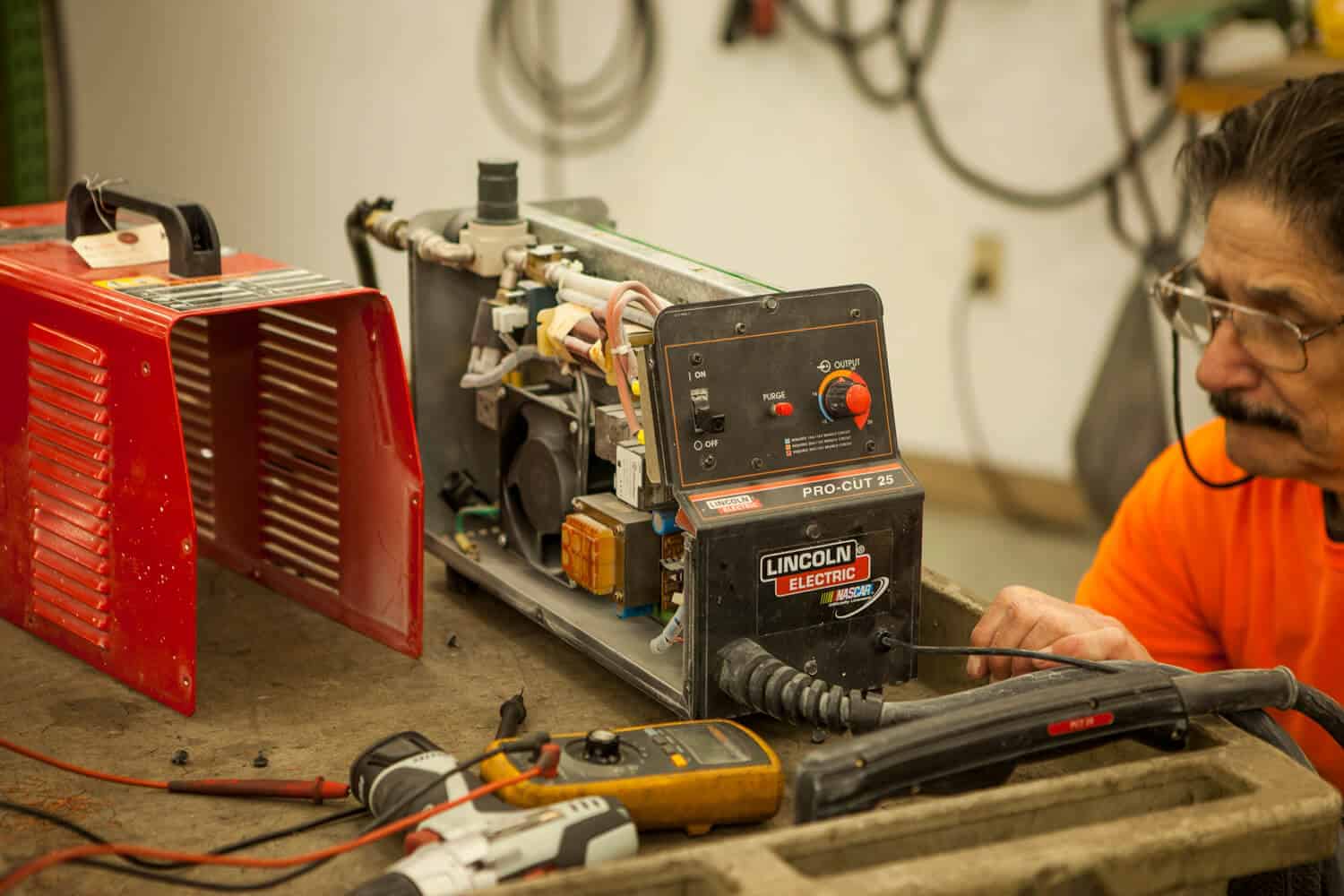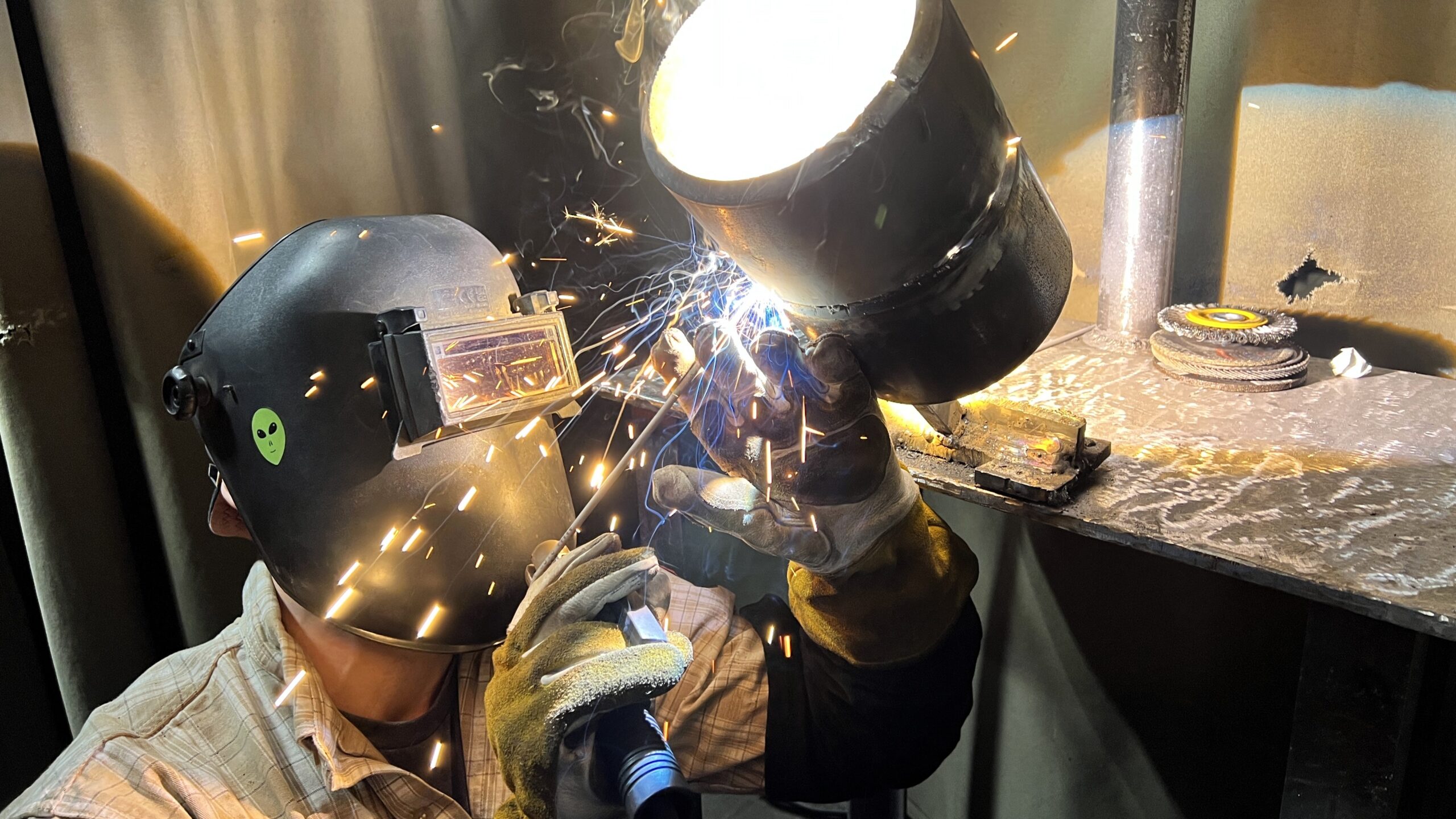All Concerning Welding: Key Insights Into Techniques and Ideal Practices for Success
Welding includes a selection of techniques, each fit for details materials and applications. Recognizing these methods, such as GMAW, SMAW, and TIG, is important for attaining ideal results. The best equipment and safety and security practices can not be overlooked. As preparation and fixing play important duties in the welding process, mastering these elements can significantly improve the top quality of the end product. What are the essential aspects that assure a successful weld?
Recognizing Different Welding Methods
Welding strategies include a range of methods, each suited to specific applications and materials. Among one of the most common strategies are Gas Steel Arc Welding (GMAW), Secured Steel Arc Welding (SMAW), and Tungsten Inert Gas Welding (TIG) GMAW, additionally referred to as MIG welding, is popular for its rate and adaptability, making it perfect for thin products. SMAW, or stick welding, is favored for its simpleness and efficiency in outdoor environments, especially with thicker steels. TIG welding offers precision and control, making it suitable for complex job and non-ferrous steels (Belgrade Welding). Each method has its unique advantages and factors to consider, allowing welders to choose the very best technique based upon the job's needs, product type, and preferred results. Understanding these strategies is important for effective welding
Important Welding Tools and Devices
While different welding strategies require details skills, the best devices and devices are equally important for accomplishing high quality results. Important welding tools consists of welding equipments, which vary relying on the technique-- such as MIG, TIG, or stick welding. Protective equipment, consisting of handwear covers, safety helmets, and aprons, assurances safety and comfort during the procedure. Additionally, clamps and components aid secure products in position, ensuring precision in welds. Consumables like welding rods, cable, and shielding gas are likewise critical components that influence the high quality of the weld. Devices such as mills and cutters facilitate surface preparation and post-weld completing, contributing to a professional outcome. Investing in premium devices eventually enhances the effectiveness and efficiency of welding jobs.
Security Practices in Welding
Appropriate security practices are vital in the welding sector to protect workers from prospective dangers. Welders must put on appropriate personal protective devices (PPE), consisting of safety helmets with appropriate shading, gloves, and flame-resistant garments. Adequate air flow is vital to reduce direct exposure to damaging fumes and gases created during the welding procedure. In addition, workers must be learnt the right handling of welding devices to avoid crashes. Fire security steps, such as keeping flammable products away from the welding area and having fire extinguishers conveniently offered, are necessary. Normal inspections of devices and workspaces can help determine potential dangers prior to they cause mishaps. By adhering to these security techniques, welders can create a much safer working environment and lessen risks connected with their profession.
Readying Materials for Welding
Preparing materials for welding is a vital step that significantly affects the quality and honesty of the last product (Montana Mobile Welding and Repair Welding). Correct preparation involves cleaning the surface areas to remove impurities such as oil, corrosion, and dirt, which can endanger the weld. Techniques such as grinding, fining sand, or utilizing solvents are generally used to achieve a clean surface. In addition, ensuring that the materials mesh comfortably is vital; spaces can cause weak welds. It's also vital to take into consideration the positioning and positioning of the parts, as this will certainly influence the convenience of welding and the last result. Finally, choosing the appropriate filler product and guaranteeing compatibility with the base metals is essential for achieving solid, durable welds
Tips for Getting High-Quality Welds
Achieving premium welds requires attention to detail and adherence to ideal practices throughout the welding process. Appropriate joint prep work is crucial, guaranteeing surface areas are totally free and clean from impurities. Selecting the appropriate filler material and welding method based upon the base steels is vital for excellent bonding. Maintaining regular travel rate and angle while welding can protect against flaws and advertise uniformity. Furthermore, regulating warm input is necessary; excessive warm can lead to bending and compromised joints. Regularly checking the welds during the process permits instant changes if essential. Ultimately, utilizing ideal post-weld therapies, such as cleansing and stress and anxiety relief, can improve the resilience and honesty of the weld, eventually guaranteeing an effective end result.
Repairing Common Welding Issues
Welding often presents challenges that can influence the quality and integrity of the final product. Typical problems such as porosity, irregular weld grains, and companies looking for welders overheating can occur, each requiring particular fixing strategies. Recognizing these troubles is crucial for welders to enhance their abilities and accomplish suitable results.
Porosity Problems Clarified
Porosity can frequently be neglected, it stays a critical problem in welding that can endanger the stability of an ended up product. Porosity refers to the existence of tiny gas pockets within the weld bead, which can lead and damage the joint to early failure. This issue commonly develops from impurities, wetness, or incorrect shielding gas coverage during the welding procedure. To mitigate porosity, welders must verify that the base materials are completely dry and clean, use suitable protecting gases, and preserve regular welding parameters. Consistently checking the tools and environment can also help determine prospective problems prior to they materialize in the weld. Resolving porosity successfully is crucial for accomplishing strong, durable welds that satisfy quality requirements.

Inconsistent Weld Beads
Irregular weld grains can substantially influence the quality and strength of an ended up item. Numerous variables contribute to this issue, including incorrect traveling speed, inaccurate amperage settings, and irregular electrode angles. When the welder moves also quickly, a bead may show up narrow and do not have infiltration, while moving also slowly can create too much buildup. Additionally, making use of the incorrect amperage can result in either damaging or excessive spatter, both of which websites concession weld honesty. The welder's method, such as irregular lantern motion, can likewise result in uneven bead look. To mitigate these problems, welders should focus on keeping consistent, regulated movements and making certain proper equipment settings to achieve harmony in their welds. Uniformity is key to accomplishing trusted and solid welds.
Overheating and Warping Issues
Too much warmth throughout the welding process can lead to considerable overheating and warping issues, impacting the structural integrity of the workpiece. These troubles often manifest as distortion, which can compromise alignment and fit-up, making additional assembly testing. Variables contributing to overheating include the choice of welding parameters, such as voltage and travel speed, in addition to the type of product being welded. To mitigate these concerns, welders need to preserve regular traveling rate and suitable warmth input while monitoring the work surface temperature. Additionally, preheating or post-weld heat therapy can aid minimize stresses brought on by rapid cooling - Montana Mobile Welding and Repair Belgrade Fabrication. Regular evaluation and adherence to ideal practices are important in preventing overheating and making sure the durability and reliability of bonded structures
Often Asked Inquiries
What Are the Job Opportunities in the Welding Market?
The welding industry provides diverse job chances, including settings as welders, designers, examiners, and teachers. Specialists can operate in production, building and construction, aerospace, and vehicle see this site industries, taking advantage of strong demand and competitive salaries in numerous functions.
How Can I Enhance My Welding Rate Without Sacrificing Top Quality?
To improve welding speed without compromising quality, one must exercise effective methods, preserve devices, optimize setups, and enhance hand-eye control. Regular training and seeking comments can additionally significantly add to accomplishing faster, top quality welds.
What Accreditations Are Readily Available for Welders?
Various certifications exist for welders, consisting of those from the American Welding Society (AWS), the National Facility for Building Education and Research Study (NCCER), and numerous industry-specific companies. These credentials improve employability and show ability proficiency.
Exactly How Does Welding Influence the Features of Metals?
Welding influences the properties of steels by changing their microstructure, which can cause adjustments in ductility, strength, and firmness. Warm input and cooling rates throughout the procedure substantially impact these material features.
Can I Bonded Dissimilar Metals With Each Other?

Comments on “Belgrade Fabrication’s essential steps for dealing with incomplete fusion”